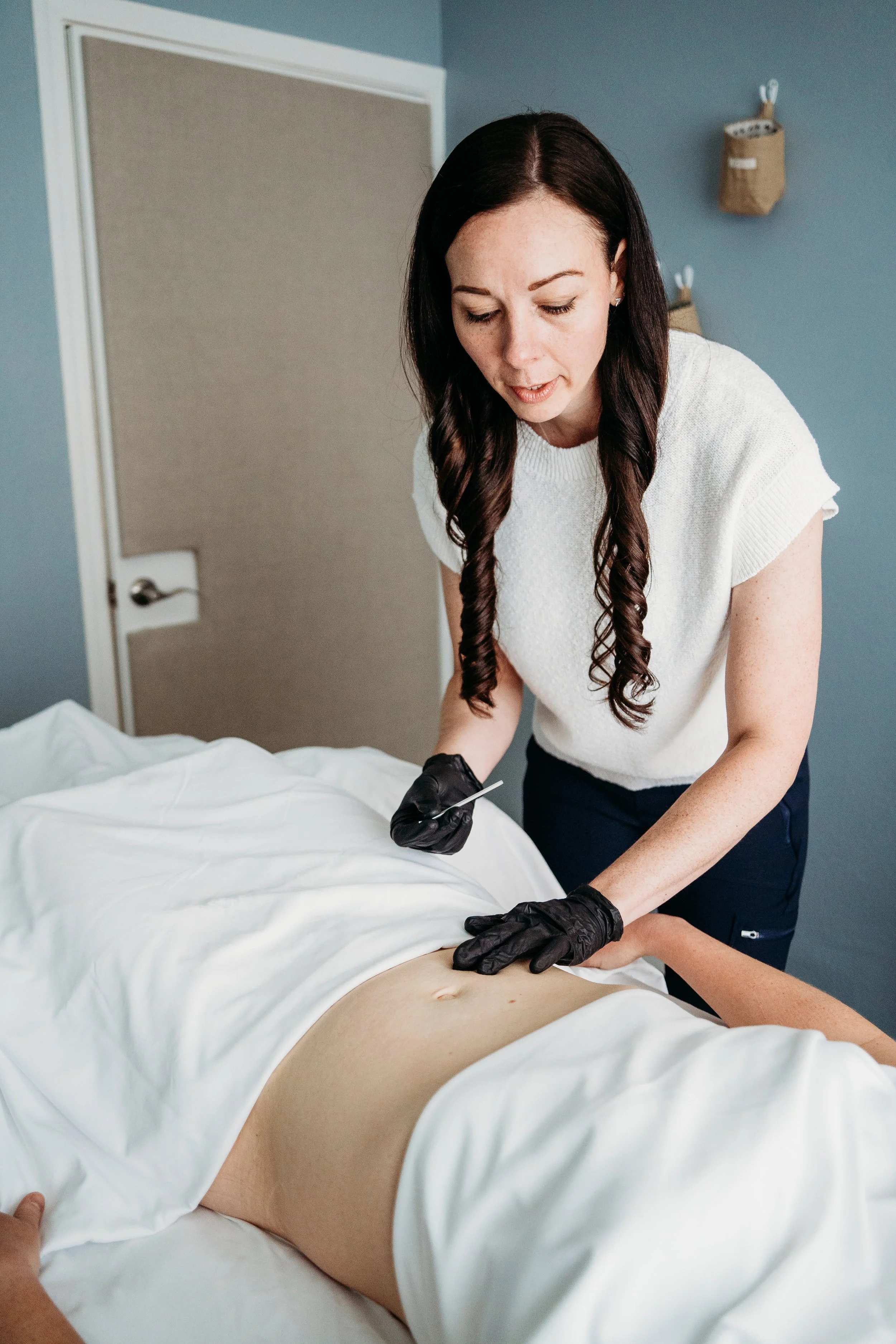
Functional Dry Needling
Trigger point dry needling and neuromodulation
What is
Dry Needling?
Dry needling is a technique used to relieve pain and improve movement. These small acupuncture size needles are inserted into or around specific points in your muscles, nerves, or connective tissues.
The insertion of these needles aims to target trigger points, which are areas of tightness or muscle knots that can cause pain and dysfunction. By inserting the needles directly into these trigger points, it can help release tension in the muscles and improve blood flow to the area, promoting healing.
Dry needling can be done with or without additional stimulation, such as mechanical or electrical stimulation. Mechanical stimulation may involve gently moving the needles or applying pressure to them to further release tension in the muscles. Electrical stimulation, on the other hand, involves sending small electrical currents through the needles to enhance the therapeutic effects.
Dry needling with neuromodulation is a proven, effective tool to help decrease pain, urinary and fecal urgency and incontinence, constipation, prolapse and erectile dysfunction.
What is neuromodulation?
Neuromodulation involves adjusting the activity of the nervous system, whether in the central nervous system (brain and spinal cord) or peripheral nervous systems (nerves outside the brain and spinal cord). Typically, this is achieved by delivering electrical stimulation precisely to a targeted muscle, influencing both the nerve and the overall nervous system. By doing so, neuromodulation can impact how signals are transmitted and processed within the nervous system.
Essentially, it helps regulate the way nerves communicate with the brain, potentially alleviating symptoms and improving function in conditions related to nervous system dysfunction, which can include peeing, pooping, penetration and pain.
What can dry needling with neuromodulation do for me?
There are many injuries that respond well to dry needling with neuromodulation. This is true for new injuries or chronic injuries, and it is true whether the injury happened doing high intensity sports or just living life. From your neck to your pelvis to the bottoms of your feet, neuromodulation has the potential to reduce pain, enhance muscle function, and aid in the recovery process.
Conditions we treat with neuromodulation
Acute or chronic injuries
Tendonitis
Muscle strains
Ligament sprains
Overused muscles
Upper extremity injuries
Tennis elbow
Rotator cuff injuries
Shoulder pain
Lower extremity injuries
Sciatica
Knee pain
Hip pain
Plantar fascitis
Head and spine
Back pain
Neck pain
Jaw pain
Headaches
Even if you have tried dry needling in the past, neuromodulation might be the missing piece to experience relief from pain!
Can dry needling with neuromodulation help my pelvic floor?
The nervous system regulates the contraction and relaxation of muscles. Dysfunction in nerve signaling in your pelvis can lead to issues with the 4 P's:
-
Peeing
Dysfunction in nerve signaling can lead to overactive bladder muscles or impaired control over the urinary sphincters, resulting in urgency, leakage, or retention.
-
Pooping
The nervous system controls the movement and coordination of muscles in the gastrointestinal tract. Issues such as nerve damage or dysfunction can disrupt this process, leading to difficulties with bowel movements causing constipation or involuntary leakage.
-
Penetration
Nerve signals play a crucial role in the initiation and maintenance of penile erection, with disruptions in nerve function contributing to difficulties in achieving or sustaining erections. Similarly, clitoral pain, often related to nerve dysfunction, can impact sexual function and/ or cause pain with penetration experiences.
-
Pain
Pain arising from nerve dysfunction can manifest in various forms, including chronic pelvic pain, discomfort during urination or bowel movements, and challenges with sexual function.





